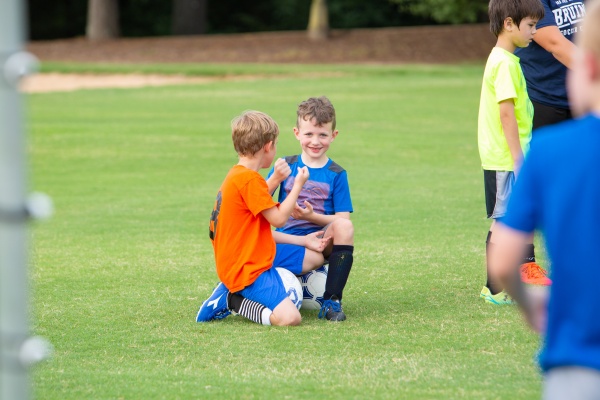Mark 16:15 says, “Go ye into all the world, and preach the gospel to every creature.” At the time this was written, traveling from one place to another took weeks, months or even years. In previous centuries, missionaries such as Hudson Taylor left all they knew to travel to the other side of the world to preach the Gospel, rarely hearing from or seeing their families again.
With the rapid rise of technology, today’s world is so much “smaller.” We are able to communicate with anyone around the world instantly. “Go ye into all the world” no longer just involves leaving your home. The world is right here just outside our door.
Why should we teach our students to be globally minded?
Our students are the future. In order to fulfill the Great Commission, they need to learn how to build relationships with people from all around the world. We need to teach our students to appreciate other ideas, cultures and traditions, as well as the importance of being willing to work with people around the world. How do we expect others to come to know that God loves them if we are not willing to build relationships with those that are different than we are?
So, how should our teaching change?
Use the Four C’s
Creativity
Teach your students to think “outside the box”—or in this case, outside the USA. We need to teach our students that missions work starts outside our front door. It’s not just traveling to a remote village and living in a hut. Our students need to learn to build relationships with others. But first, they need to learn about other cultures, languages and lives.
Collaboration
Teach your students how to work with each other, so they can use those skills in the future when working with others.
Critical Thinking
One cannot learn without thinking well. Problem-solving techniques go hand in hand with collaboration.
Communication
Effective communication is important to contributing to and being a part of a team. Teach your students to articulate thoughts as well as to listen in order to communicate well.
Model Being Globally Minded
There are things we can do as teachers to help our students to become more globally minded. First of all, we need to model through thoughts, words and actions. This seems like a no-brainer, but it is so very true. Our students are watching and listening to everything we say and do. Our actions speak louder than our words.
Start Language Learning Early
Secondly, start language learning as young as possible. The younger you are the easier it is to learn a language and pick up on the accent and tones. Many schools are now offering foreign language classes in the elementary grades. If your school does not offer that yet, incorporate language learning in your classroom. There are many programs available online and via smart devices and tablets that offer language learning for children.
Emphasize Equality
Third, teach your students that we are all just people. We have differences as well as commonalities. We all have fears, hopes and dreams. We eat, play, work and sleep. We have all been created to bring glory to God. Take time to teach your students about what other students around the world experience. Have an international day. Teach your students things such as holiday customs, traditions, clothing, nap times, school, greetings, foods, culture and more.
Discuss Other Cultures
Fourth, culture needs to be talked about early. Our schools are filled with people from different cultures and ethnicities. Embrace it! Teach it! When opportunities arise, use it as a teaching tool. Skype and FaceTime are great tools to use in the classroom. They can be used to contact missionaries or other people you may know in another country. This is an excellent way for students make connections around the world—sort of modern-day pen pals.
There are also a number of places to sign up for a traditional pen pal from a different country, but a good resource would be children in a missionary’s church. Students can exchange letters with their pen pal then share with the class. Use a Flat Stanley or stuffed animal to send around the world. Create a social media page for your classroom where their adventures can be posted. Share these with the class.
Teach Respect
Fifth, teach your students to have respect for others. Just because someone is different from you in looks or likes different foods or has different traditions does not make them inferior or better than anyone else. By teaching respect for others, you can also teach your students how to make connections with others in order to fulfill the Great Commission.
God has not called everyone to the mission field in another country, but He has commanded us to preach the Gospel. The mission field is no longer just on foreign soil. It is now outside our doorstep. It has come to us. It is our responsibility as Christian educators to teach our students to develop a burden for people around the world. But before they develop that burden they have to be made aware of the world and people around them.
Check out the link below for some ideas and resources to uses in your classroom as you teach your students to become more globally minded.








